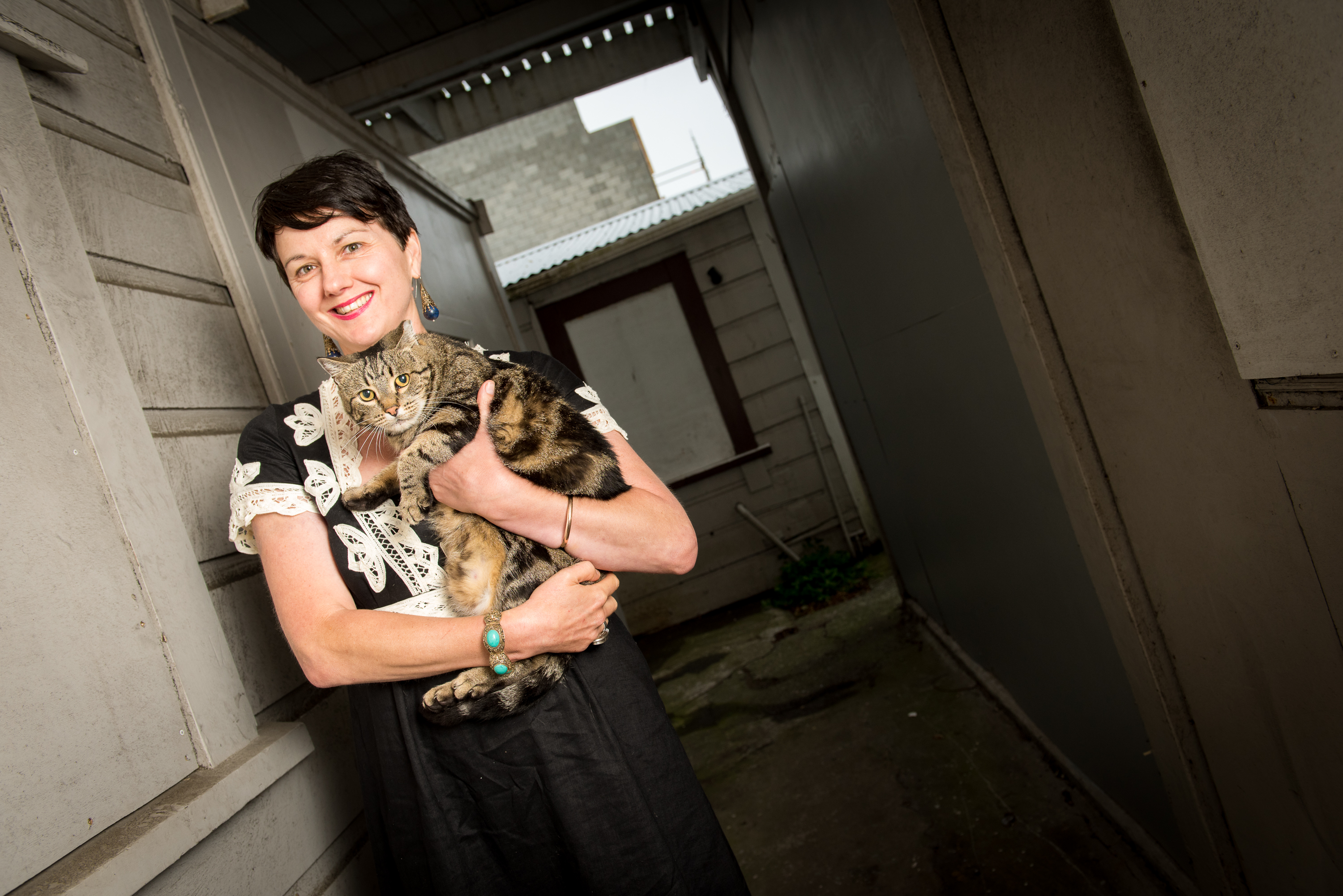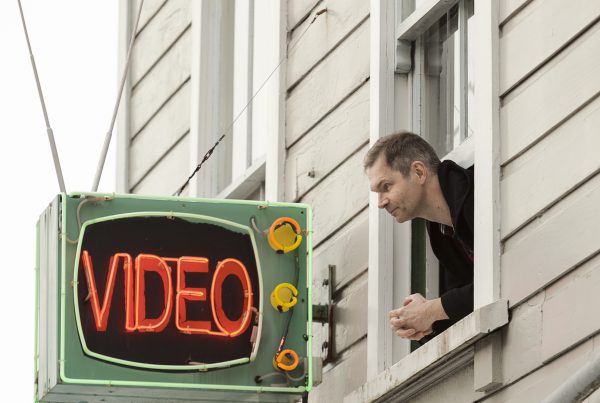One day last year, when I was poking around the grounds of the big semi-derelict house on the corner of Abel Smith and Willis Street, I noticed a sign that proclaimed its writer to be, under the Animal Welfare Act, the guardian of the small colony of stray cats living under that house.
That writer turned out to be Angela Campbell, a resident of one of the nearby apartment blocks. A couple of years ago, she had noticed there were a lot of stray cats living around the old house, which was being neglected by its owners, the New Zealand Transport Agency.
Nash called the SPCA, so they could come and remove them, “but they said, ‘We don’t catch cats.’ So I just started feeding them, and socialising them.” With steely determination, Nash became, quite literally, “like a guardian for the cats”. She provided them with food and shelter, and “supported them in where they live”; she even bought a kennel for them to use, though they ignored it and kept sleeping under the house.
In an 18-month-long campaign, she was able to get 19 cats — including two litters of kittens — captured, neutered and (for the most part) rehoused. The SPCA found new homes for the kittens, which were, of course, young and cute and easily domesticated.
The adult cats, in contrast, were regarded as a hopeless case. “The thinking was that they would never be able to live in a domestic situation, because they were all too wild,” says Nash. “But that’s been proven wrong.” She found homes, among friends and contacts, for almost all of the now neutered adults. “They are not going to be lap cats, but they [their new owners] knew that.” Just two cats now remain under the house, still aloof, though happy to take Nash’s food once a day.
It was quite a feat, of course, feeding all those cats for 18 months, and one wonders what might have motivated it. “Well, I don’t like any kind of suffering. I don’t like to see animals starving, or being cold.”
For some people, the answer to that problem is fewer animals — especially if you’re, say, an anti-cat campaigner like Gareth Morgan, who one imagines might not be Nash’s favourite person. “I’m not sure exactly what he was about,” she says, diplomatically, “but he was talking about [people taking] responsibility, and I don’t think that’s a bad thing.” The wider issues around conservation, native birdlife and the damage done by cats are, she feels, outside her ambit. “I’m too busy to think about that stuff — I’m just concerned about animal welfare.”
Nash gave all the cats names — such as Truman and Misty — and built up a rapport with them. “It’s very satisfying, you know, when you can achieve that. Though Misty was hard — she took about three months [to bond with].” There was no great secret to creating the rapport, just kindness, 18 months of constant and regular visits — oh, and Temptations food treats, “which are like some kind of crack for cats”.
During that 18-month stretch, Nash would often cycle down to the house, and eventually the cats “would get to recognise the sound of my brakes. That’s pretty special, you know?” But it was, she admits, “exhausting”. Not to mention expensive, one imagines.
Other people, she says, have largely been supportive of her efforts. “Though there were some people living nearby who were like, ‘You just need to kill them.’” Gareth Morgan supporters, perhaps. “Well, it wasn’t actually very helpful.”
Anyway, all of this is very admirable, but it does beg one question: how many cats does she herself own? “I live in an apartment,” Nash says, “so I can’t have animals.”





